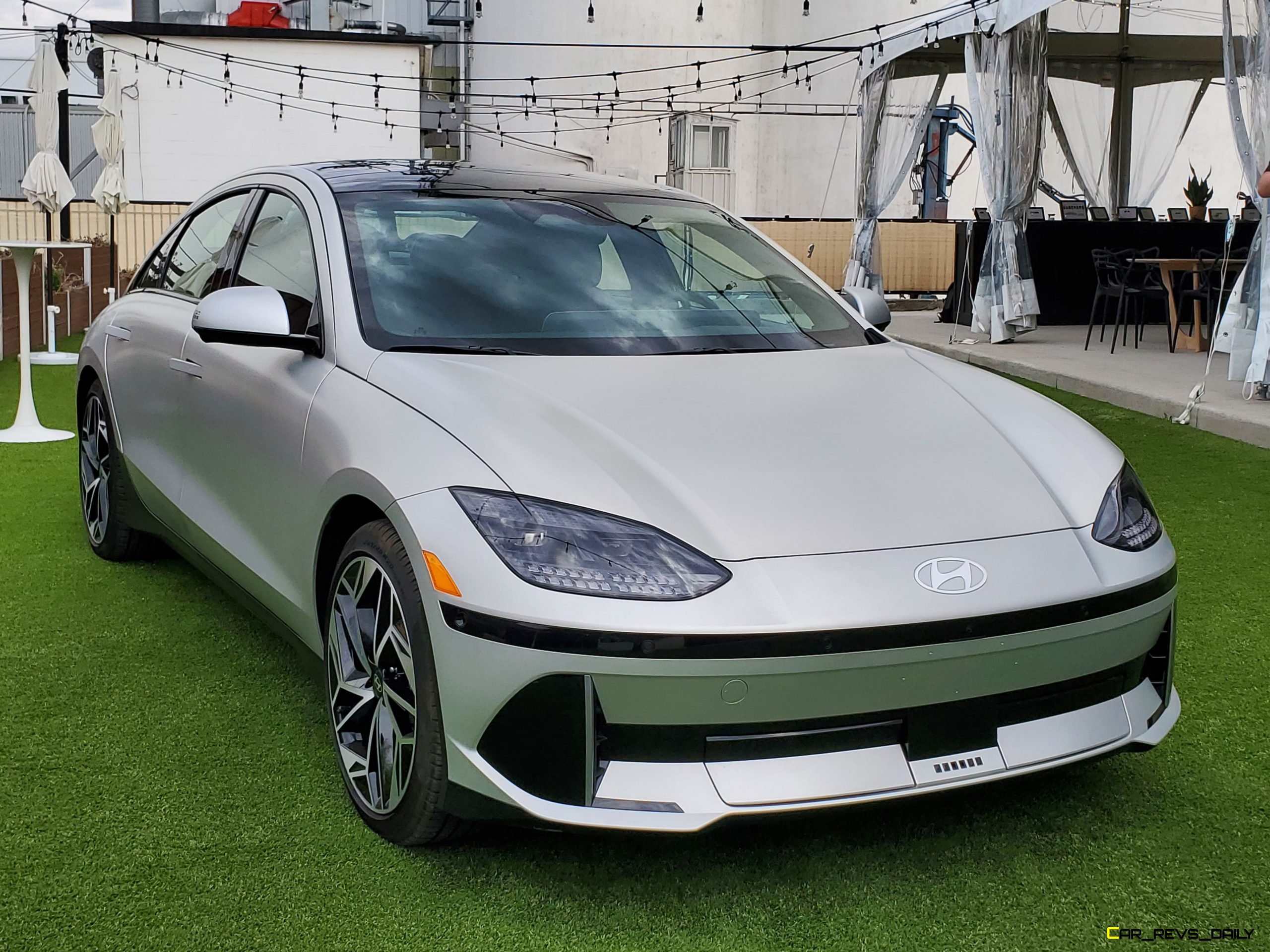The Hyundai Ioniq 5 SUV served as a proverbial crystal ball into Hyundai’s broader EV plans, with the hatchback-like utility vehicle debuting the state-of-the-art E-GMP platform and some of the advanced EV components lurking underneath. However, the 5 was not known for its performance character, with Hyundai developing the model to be an urban-focused commuter. The 2023 Ioniq 6 aims to change all that with its focus on style, performance, and sustainability. But is all of this enough to make the Ioniq 6 stand out against rivals like the Polestar 2 and the Tesla Model 3?
Ioniq 6 Styling Dominated By Pixels, Sleek Shape Sharpens Focus
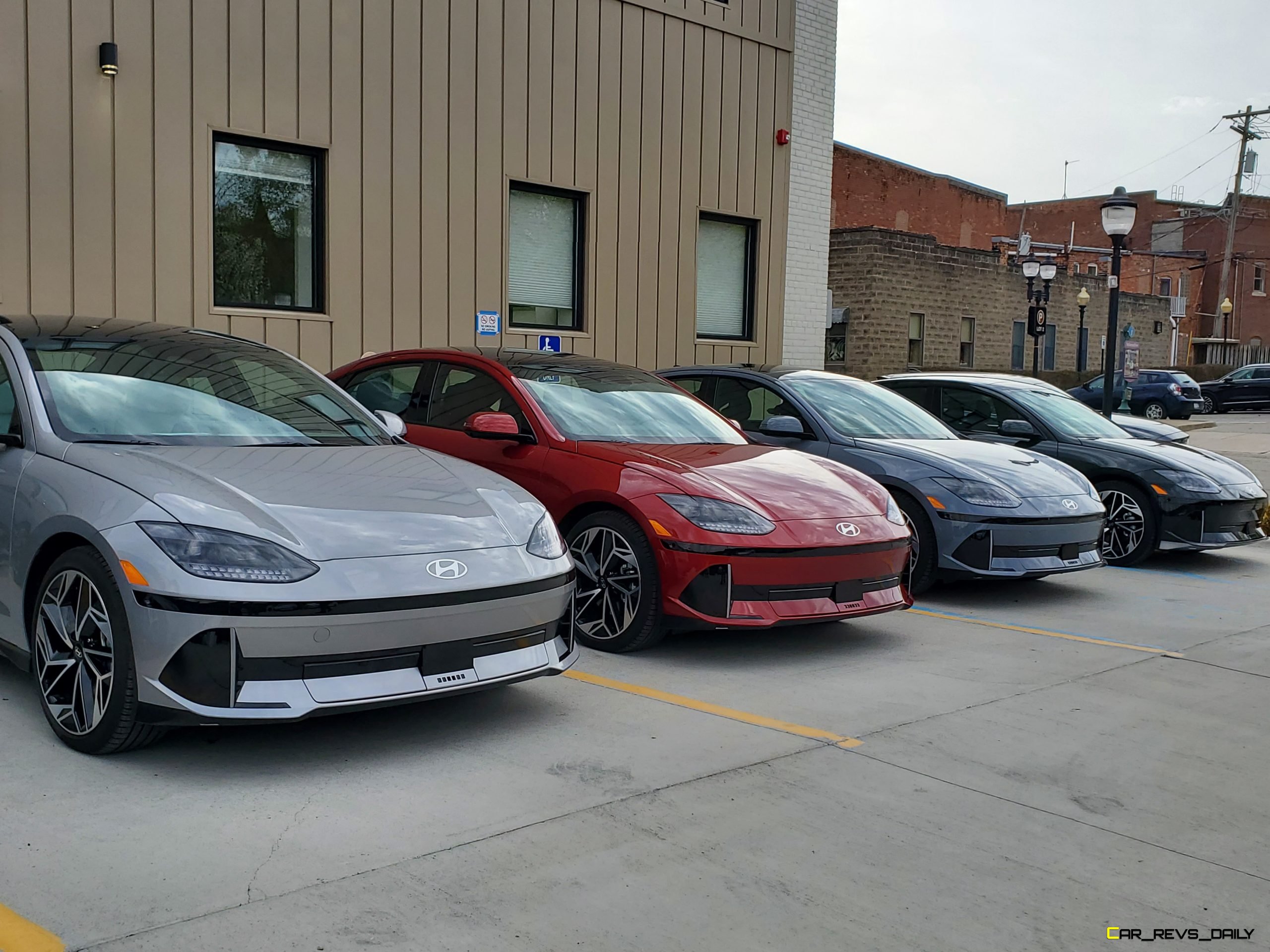
The exterior styling of the Ioniq 6 is inspired by the recent wave of four-door coupes that have entered the broader marketplace. The Ioniq 6, however adopts a much cleaner-looking design with the smooth front end featuring rounded headlights and broad shoulders that run along either side of the hood. The headlights also feature pixel elements (a persistent theme), with the lower bumper incorporating active grille shutters that allow the Ioniq 6 to maximize its aerodynamics.
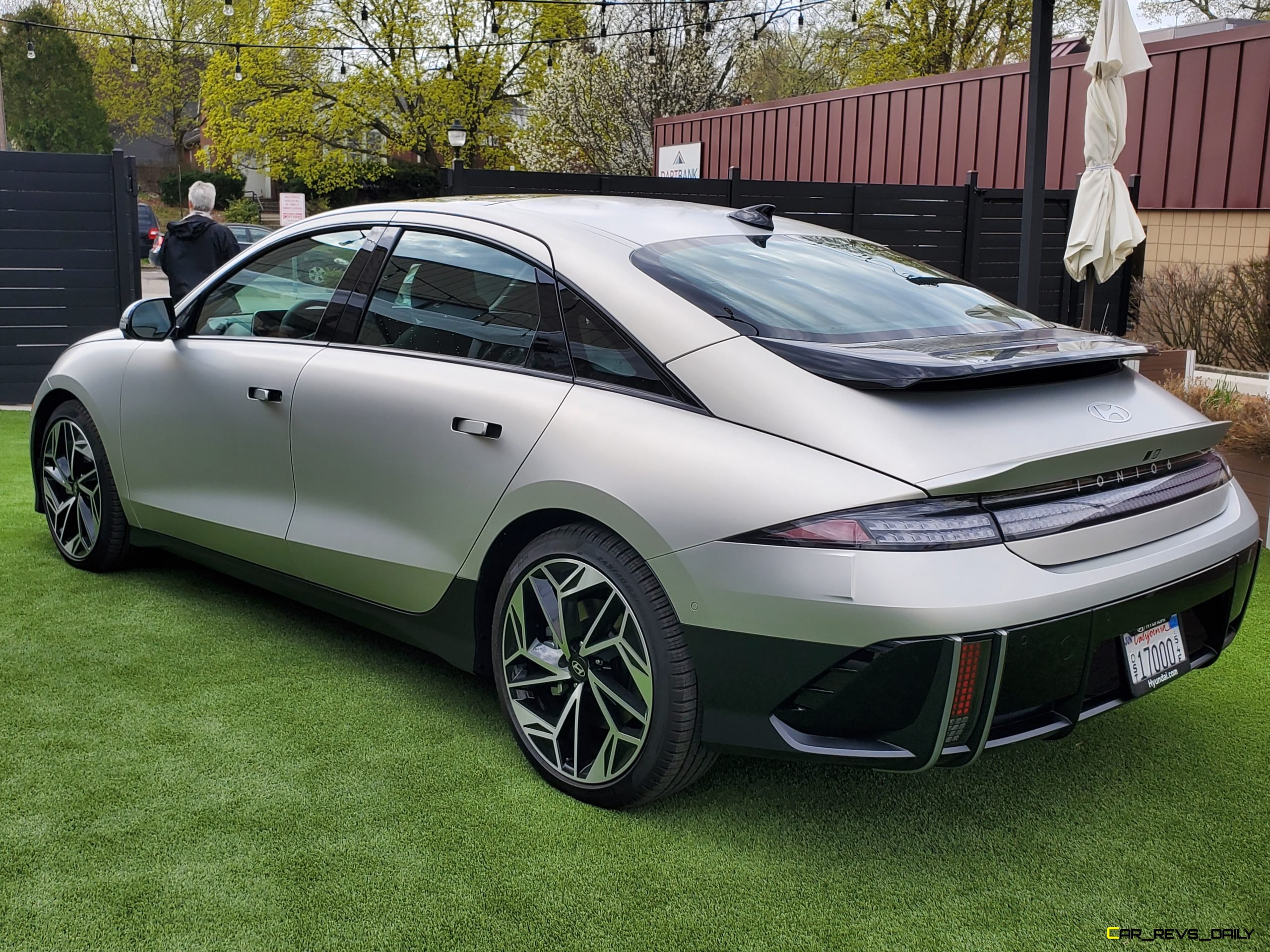
The side profile leads out to the rear of the Ioniq 6, which gets pixelated taillights and a rear spoiler with pixelated accents in it too. Hyundai also strongly focused on sustainability when they were developing the Ioniq 6. While the bulk of this effort is centered on the interior (more on that later), the exterior benefits from a lineup of bio-paints with the hues being made out of plant based materials. In addition to traditional paint colors, the bio-paint treatment also extends to matte shades though Hyundai is keeping that option to only one hue for now. International market versions of the Ioniq 6 can be equipped with futuristic camera mirrors, but U.S. models won’t get them for the foreseeable future due to lingering NHTSA regulations forbidding the use of the tech. Instead, models on our shores will get traditional mirrors with the housing featuring pixel shapes.
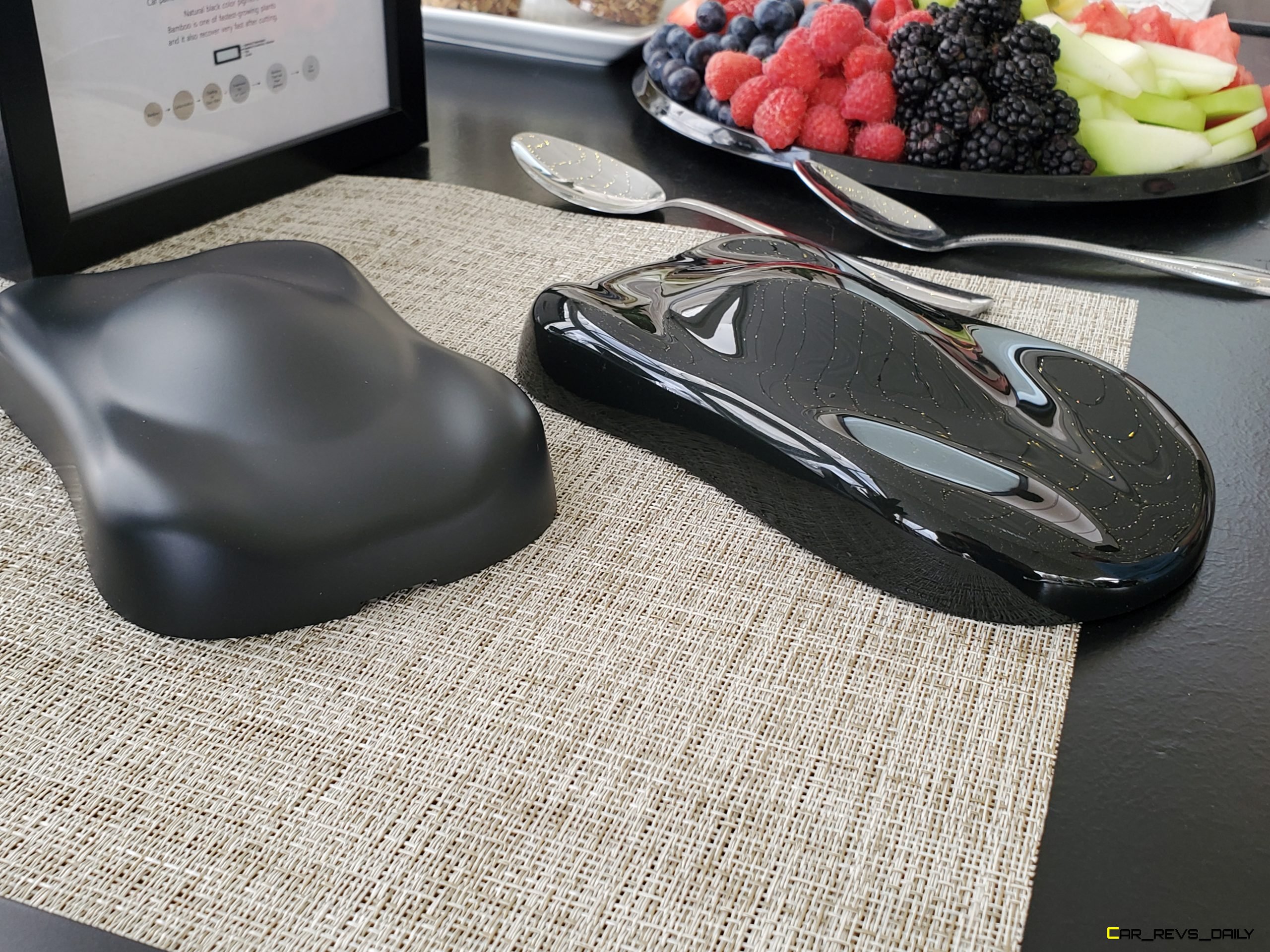
Base SE models get 18-inch alloy wheels, while SEL and Limited models get bigger 20-inch wheels with a dynamic spoke pattern. Overall, the look is a clear swing at Tesla, but while the rear-end will always be a hit-or-miss affair in the eyes of many observers, the front half of the car does an excellent job of projecting its personality. We suspect that will help draw in the bulk of Ioniq 6 buyers.
Ioniq 6 Interior Bleeds Luxury and Comfort
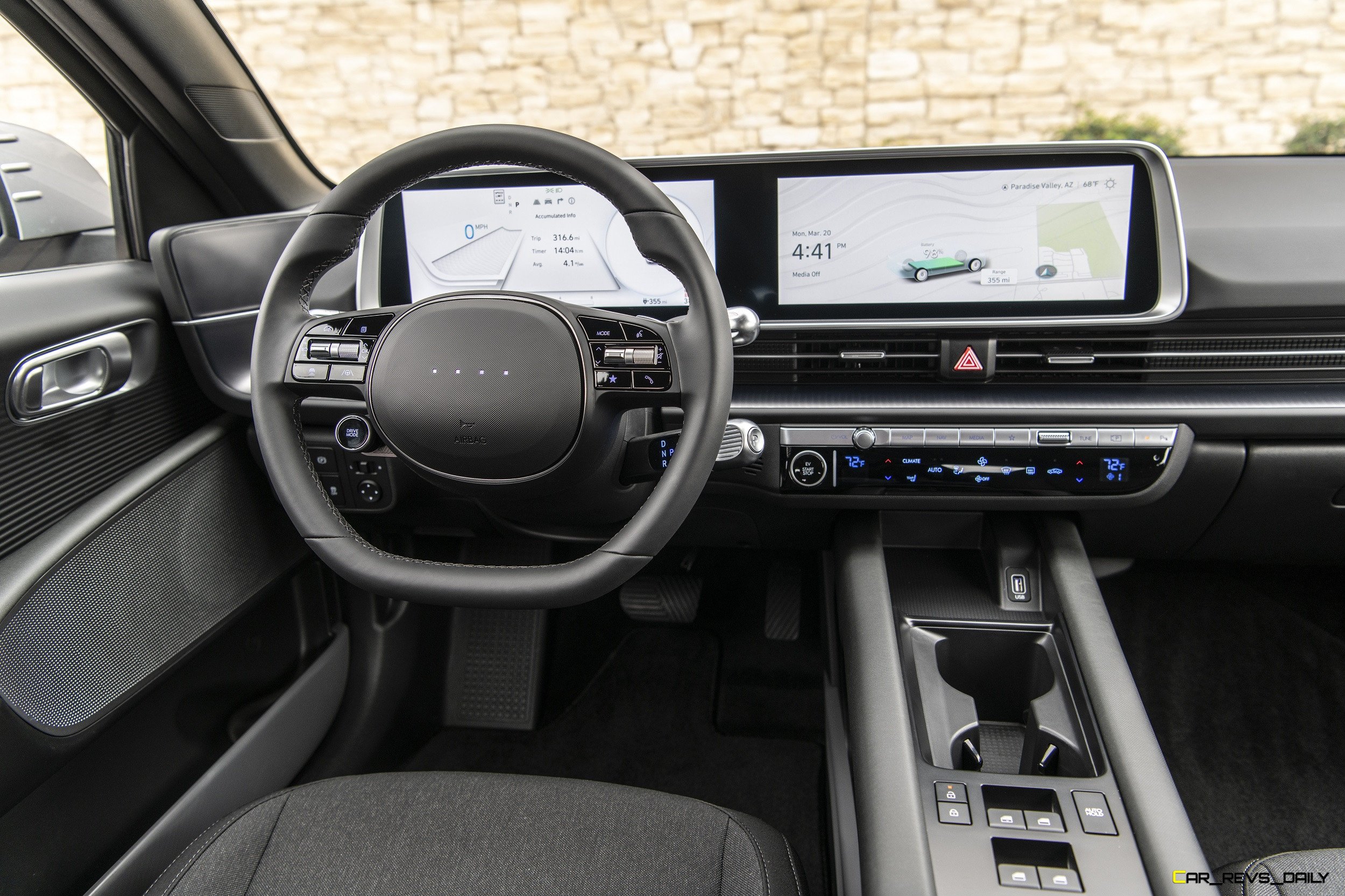
Hyundai wanted to create a lounge-like atmosphere for EV buyers, and while the Ioniq 5 does an excellent job of this, things get kicked up a notch in the Ioniq 6. The 6 is designed to be a more premium offering, which is evident with some of the materials Hyundai has added to the cabin. The dots on the steering wheel (Hyundai claims that they are the Morse code symbol for the letter “H”) are still here, but they now light up, and the pixels even show how far along the charging process the Ioniq 6 is. The flat floor in the back helps improve rear seat room, and the front seats also offer plenty of leg and knee room. Hyundai wanted to simplify the door panels’ design and moved the window and lock controls to the center console with the panels only retaining the door handle. This allowed designers to get creative with the design, and our SEL-grade example had tasteful ribbed accents running along the fore-mentioned panel. The front seats are comfortable, but we wish they had a bit more bolstering in certain areas to help make them perfect.
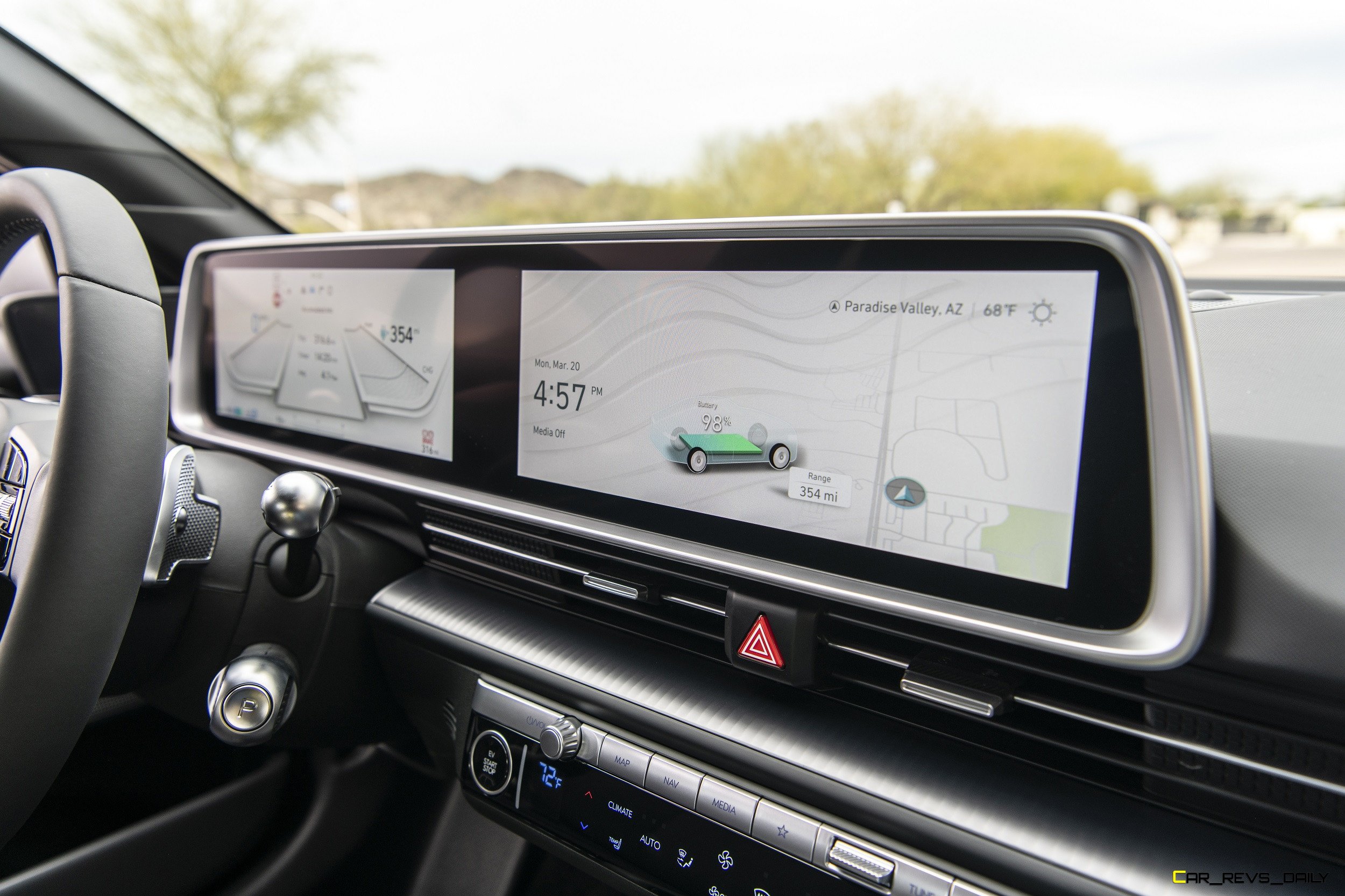
Several layers of sound-deadening material have been added to help keep the cabin quiet, and there are times when it feels like a Genesis product inside when it comes to keeping the background noise out. The interior also has two 12.3-inch screens, with one screen covering the infotainment screen and the other serving as the digital instrument cluster. The infotainment screen supports Apple and Android-equipped phones, and the menu layout is straightforward. Hyundai’s parade of sustainable materials continues in the cabin, with sugarcane and other recycled materials used throughout the cabin.
@carlmalek @hyundaiusa let us #takeaspin in the #hyundaiioniq6 this sleek #ev is aiming for rivals like the @polestarcars #polestar2 and the #teslamodel3 with #tech #style and #efficiency #moretocome🔥 #evsoftiktok #hyundai #electriccars #electriccar #carsoftiktok #ioniq
The Ioniq 6’s trunk is arguably where the focus on style demands a toll, with the space being tight and cramped. Thankfully, the rear seats fold down to help improve cargo space, and this allows the Ioniq 6 to swallow a day’s worth of groceries or even a a bulky purchase you made on Craigslist.
Spirited Driving Or Green Commuting This Hyundai Does It All
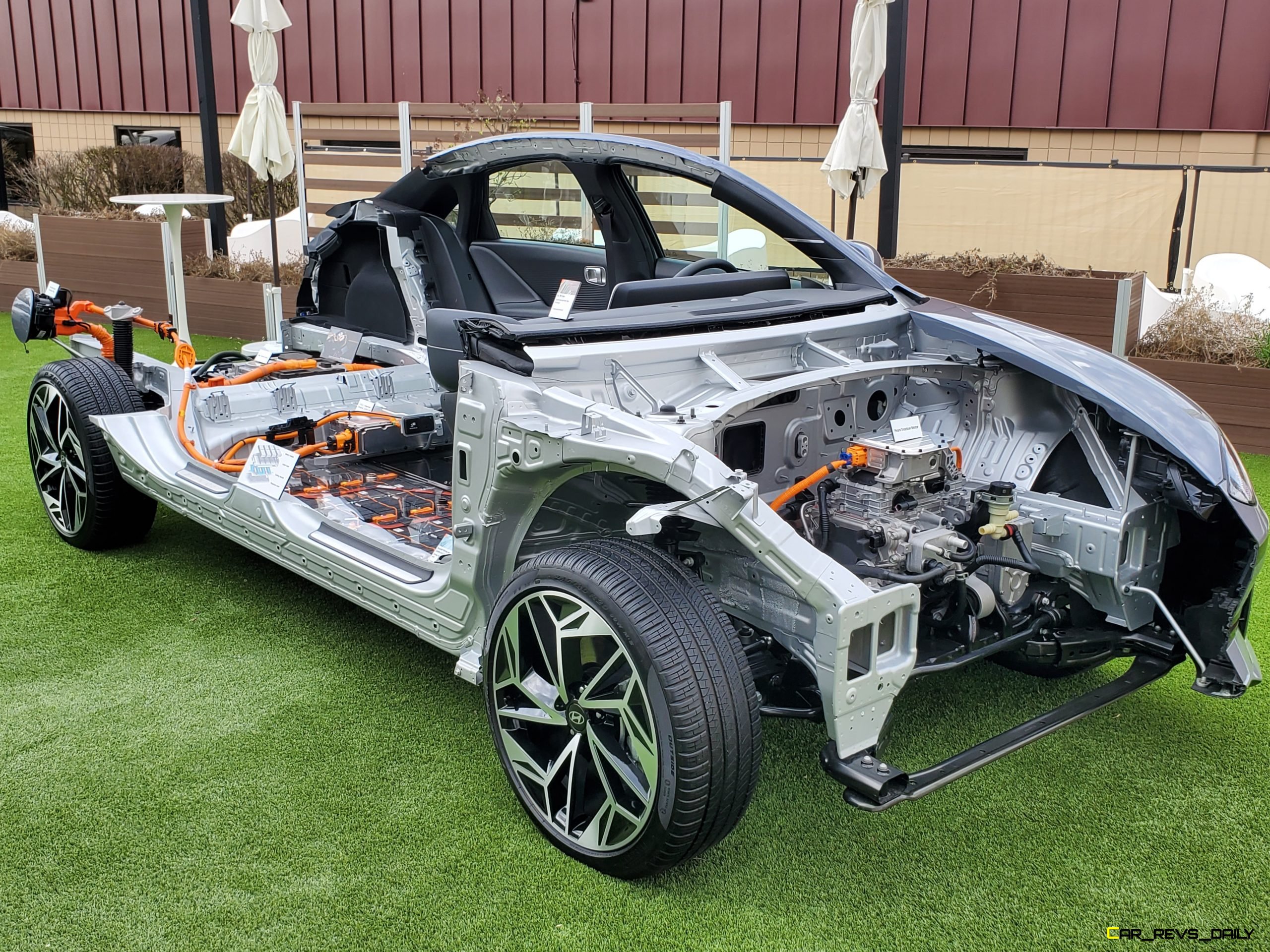
With the platform being shared with the Ioniq 5, it’s no surprise that the powertrains are also carried over from that model, with the base Ioniq 6 model being powered by a single electric motor that produces 149 horsepower and motivates the rear wheels. A Long Range package gives the car a bigger battery pack which helps boost power to 225-hp. Buyers can also add a second motor to the Ioniq 6 with the dual-motor arraignment helping to produce 320-hp and provide standard all-wheel drive. That’s enough to propel the Ioniq 6 to 60 mph in 5.1 seconds, and power delivery in the Ioniq 6 is impressive, with the motors providing plenty of torque all over the rev band.
@carlmalek @hyundaiusa promised that the #ioniq6 would be a blend of #fun and #efficency and this dual motored wonder certainly delivers on that promise quite nicely. #range on this SE Long Range model is 361 miles. The base model gets a smaller battery pack and 305 miles. #fyp #ioniq #carsoftiktok #electriccar #electriccars #hyundai #evsoftiktok #hyundaiioniq6
The suspension in our example won’t hold a candle to Hyundai’s N badged models (rumors of a N infused Ioniq 6 still run rampant), but our tester proved to be a commendable steed when tasked with running through our performance driving route outside of Hell, Michigan. Our route’s sweeping corners and curves revealed a car with surprisingly confident handling manners in Sport mode and firm brakes when it came time to bring the fun to a controlled stop. However, the Ioniq 6 is also an EV, and that means range and green motoring are also a part of the driving experience. While range does plunge when tossing it about in spirited driving, dual-motor Ioniq 6 models like our example can get 270 miles of range in urban commuting with the rear-wheel drive version gets 305 miles due to the bigger 20-inch wheels with the RWD Limited also mirroring that figure.

The highest amount of range is found in the base SE model, with the rear-wheel drive version getting 361 miles of range between charges. Meanwhile, the dual-motor option (available on all trims) decreases that amount slightly to 316 miles. That’s on par with many rivals, and Hyundai also revealed that the Ioniq 6 can power gear and even other electric vehicles thanks to the available V2L adaptor.
Value Quotient:
The 2023 Hyundai Ioniq 6 will eventually be available across the entire U.S., but for now, Hyundai will be limiting availability to select markets like California or New York. Base pricing starts at $46,615 (all pricing includes the $1,115 destination fee) for the base SE model. SEL models like our example have a base price of $48,815 with all-wheel drive adding $3,500 to the price. Our tester had a final as-tested price of $52,315, with the price only being beat by the Limited model, which has a sticker of $57,215 when equipped with all-wheel drive.
This pricing makes the SEL model the best pick of the bunch, with the pricing potentially moving into the mid $40,000 range when green credits and other incentives are factored in. It also allows the Ioniq 6 to compete with benchmarks like the Tesla Model S and the Polestar 2. The Volkswagen ID.7 is also a rival, but it will be appearing in dealer lots later this year.
The 2023 Ioniq 6 is a clear window into what’s next for electrification, and while we hope that the N model (if it’s being made) will allow Hyundai to bring the fight to plaid versions of the Model 3, look for the 6 in its current version to still be a compelling pick for a growing pool of EV buyers.

Carl Malek has been an automotive journalist for over 10 years. First starting out as a freelance photographer before making the transition to writing during college, his work has appeared on numerous automotive forums as well as websites such as Autoshopper.com.
Carl is also a big fan of British vehicles with the bulk of his devotion going to the Morgan Motor Company as well as offerings from Lotus, MG, and Caterham. When he is not writing about automobiles, Carl enjoys spending time with his family and friends in the Metro Detroit area, as well as spending time with his adorable pets.

